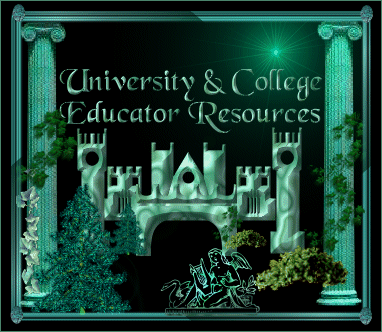
Index
Links to Explore
Academic Journals
Visions of Adonai Designs
|

Feature Article
Learning Styles in Higher Education
Dateline: 03/20/99
Learning styles has become a buzz word at all levels of education over the past decade or two. Research on this
individualized approach to learning has both supported and rejected Learning Styles as a meaningful approach
to teaching both children and adults. Promoters of this perspective believe that learners process information and
knowledge more efficiently if given the opportunity to use their preferred methods of learning within the educational
environment.
The variety of learning styles taxonomies available further complicate yet enrich the study of this perspective on
educational transference. The most renowned and extensively studied taxonomy is not labeled as a learning styles
taxonomy per se, but as Multiple Intelligences, the model introduced by Howard Gardner, from Harvard University.
A basic overview of the first seven of Gardner's Intelligences can be viewed at
SCBE's Multiple Intelligence Theory website, published by the Simcoe County District School Board. Another site,
Theory Into Practice (TIP) an extensive database compiled by
Greg Kearsley, offers an alternate explanation of Gardner's work for higher education faculty.
An introduction to Gardner's new eighth intelligence, the naturalist style, can be viewed at the
Zephyr Press website through a 1998 interview with Gardner, written
by Ronnie Durie, the editor of Mindshift Connection. An earlier interview with Gardner in 1997 which
focuses on all eight intelligences can be read at Educational Leadership
online, written by Kathy Checkley.
A very interesting java chart can be viewed at Exploring Multiple Intelligences developed by
Clifford Morris, who illustrated the relationship of Multiple Intelligences with the locus of control and the intellectual - affective continuum.
The second major taxonomy used by many faculty to introduce their students to learning styles and personality type, is the Myers
Briggs Type Indicator, or MBTI. This taxonomy was developed by Isabelle Myers-Briggs and her mother Katherine Briggs
based on Carl Jung's theory of personality type. An official website for the MBTI can be found at the website of the
Association for Psychological Type.
You can also learn more about the MBTI at the GSU Master Teacher Program On
Learning Styles written by Harvey J. Brightman, of Georgia State University. Or visit
Matters of Style for a brief MBTI overview.
The DVC learning styles taxonomy includes three of the same indicators shown in Gardner's theory, namely visual, verbal and kinesthetic as well
as a fourth: tactile learners. You can explore the survey used to test learning styles using this taxonomy at
The DVC Learning Style Survey site and read about
the styles at The Four Learning Style Categories in the DVC.
These three taxonomies are just a sampling of the many learning style theories available. For more information on alternate models for
learning style assessment go to the following websites:
Learning Modalities, Styles and Strategies, a comprehensive site
from Edstyle, offering an introduction to seven kinds of learning style assessment guides as well as tools to test other learning factors.
Learning on the Internet: Learning Styles from Algonquin College illustrates
Kolb's Learning Style taxonomy, while the Index of Learning
Styles website by Barbara A. Soloman and Richard M. Felder of North Carolina State University introduces the ILS inventory.
Learning styles continue to be a controversial topic for educators at all levels of the continuum. Whether you consider them when planning
your curriculum is usually a personal choice. Getting informed about the theory is the first step. Dialoguing with peers about their experiences
is a logical progression. Join us in our Higher Ed Dialogue room to share your views and experiences with other educators exploring this
new buzz on the education circuit.
|